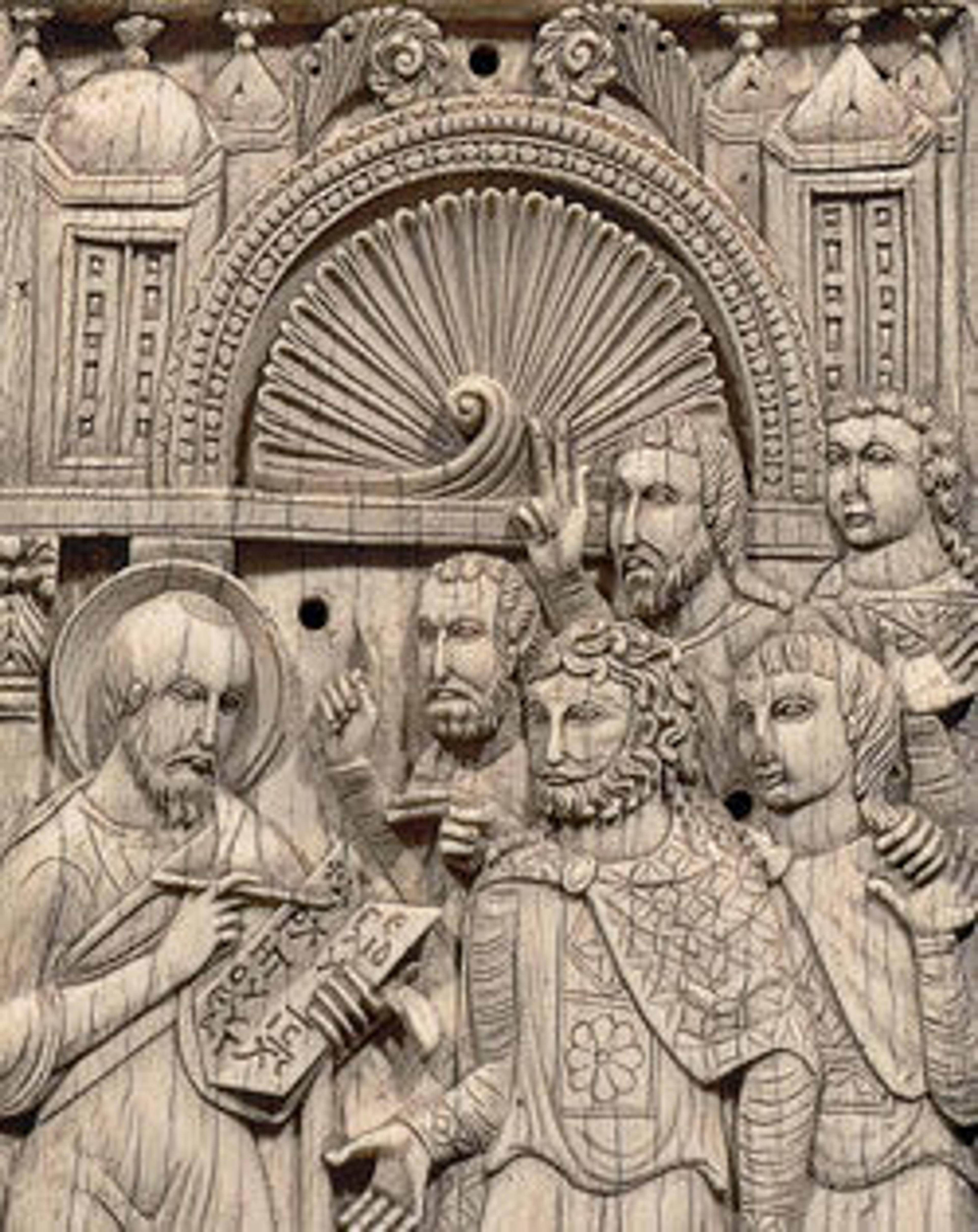Solidus of Heraclius, Heraclius Constantine, and Heraclonas
Herakleios included his sons' portraits on his coins to ensure that his subjects would expect them to succeed him. Some of the earliest Arab coins minted in Syria in the later 600s mimicked his coins.
Coins connected an emperor to his subjects. He paid the army in coins, received taxes in coins, and was responsible for maintaining their weight and purity. These coins of early Byzantine emperors conveyed imperial ideals through inscriptions and images.
Coins connected an emperor to his subjects. He paid the army in coins, received taxes in coins, and was responsible for maintaining their weight and purity. These coins of early Byzantine emperors conveyed imperial ideals through inscriptions and images.
Artwork Details
- Title: Solidus of Heraclius, Heraclius Constantine, and Heraclonas
- Date: 638–641
- Geography: Made in Constantinople
- Culture: Byzantine
- Medium: Gold
- Dimensions: Overall: 13/16 x 1/16 in. (2 x 0.1 cm)
- Classification: Coins
- Credit Line: Gift of Darius Ogden Mills, 1904
- Object Number: 04.2.822
- Curatorial Department: Medieval Art and The Cloisters
More Artwork
Research Resources
The Met provides unparalleled resources for research and welcomes an international community of students and scholars. The Met's Open Access API is where creators and researchers can connect to the The Met collection. Open Access data and public domain images are available for unrestricted commercial and noncommercial use without permission or fee.
To request images under copyright and other restrictions, please use this Image Request form.
Feedback
We continue to research and examine historical and cultural context for objects in The Met collection. If you have comments or questions about this object record, please complete and submit this form. The Museum looks forward to receiving your comments.
